Homeland of the room violet (Saintpaulia)
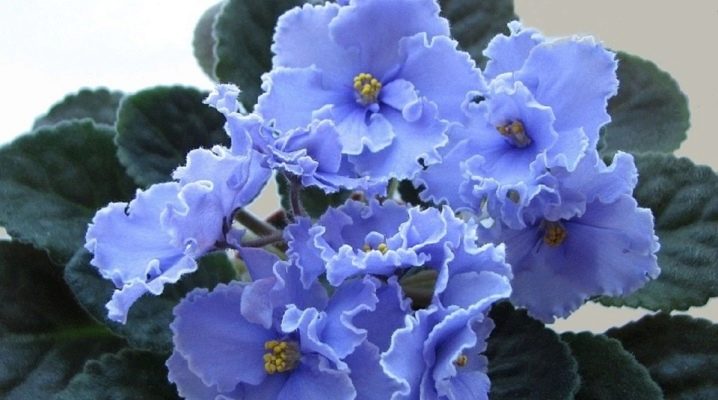
The Uzambara violet is popular among amateur and professional flower growers. Africa is considered the birthplace of this culture, it was here that it was first discovered. The rules for caring for a plant, features, growing area, varieties - we will take a closer look at everything in the article.

Plant features
The violet can be easily distinguished from other plants by its characteristic features listed in the crop description.
Saintpaulia (in common people called the Usambar violet) - perennial short-stemmed culture up to 30 cm high with fleecy oval-shaped leaf plates. The leaf of various varieties can take on an elongated or heart-shaped shape, with a smooth or serrated edge. Color from light green to dark emerald. Variegated varieties are colored in light spots over the entire surface of the leaf or along its edge, forming a border.
Saintpaulia flower is terry, simple, the petals have a wavy, corrugated shape. Up to 4 cm in diameter, the buds are collected in inflorescences. The color ranges from white to deep purple, including pink and blue. Violets are multi-colored, which means that on one plant in the inflorescences there are flowers of different shades.
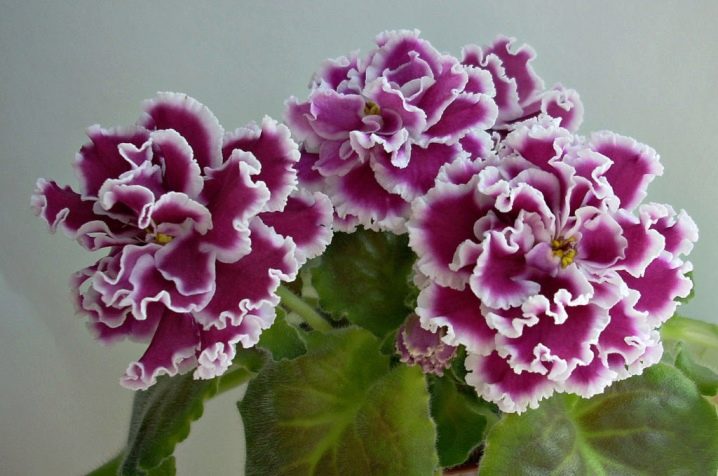
Indoor violet is a hybrid, there is a variety of varieties and species - more than 30,000 varieties of this culture. To distinguish between varieties, you need to focus on the characteristic features of each flower - the size and shape of the leaves, buds, their color, the presence of a fringe, flower border, patterns and more. Violets bloom year-round when conditions are favorable and properly cared for.
Homemade saintpaulia practically unpretentious in care.
By the characteristic feature of the leaf, the violet can be distinguished into a "female" and "male" plant. The former have a light speck at the base of the leaf plate, which the “male” ones do not have - their leaves are uniformly colored.
The dimensions of the Saintpaulia rosette are on average about 15-20 cm, there are cultures with a rosette up to 40 cm, there are also "giant" violets up to 60 cm, babies up to 6 cm, which are called microminiatures.
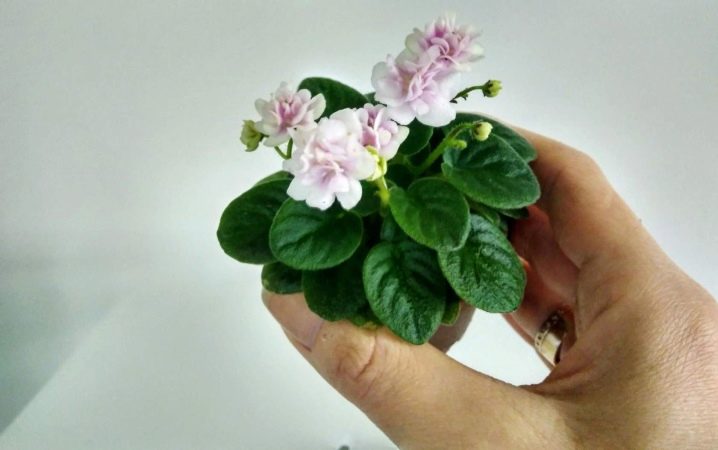
Common varieties
Violets are found on the windowsills of florists varieties "Currant Dessert", "Bridal Bouquet", "Jan Minuet" and "Aquamarine".
- "Currant dessert". The flowers look like a star, the buds are collected in inflorescences, painted in purple with a bluish tint. The leaf plate is dark green with a fringe, the rosette is large. This variety is widely used to decorate various holidays.

- "The bride's bouquet". A culture with white large flowers, the outer surface of which is slightly hairy, the tips of the petals are wavy. The leaf plate is dark green.
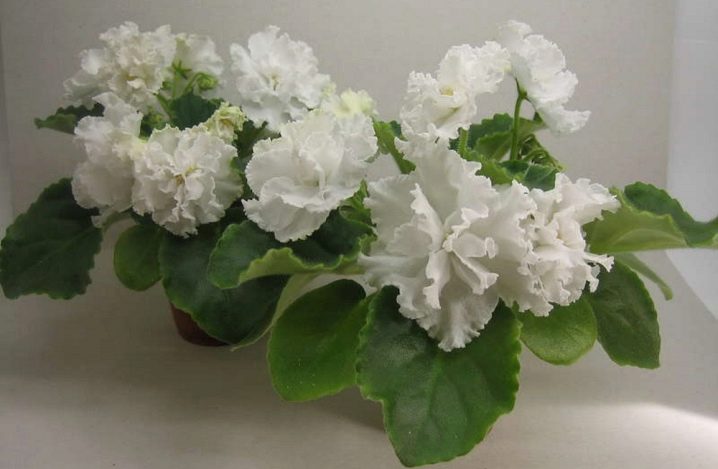
- Jan Minuet. A plant with white, pale pinkish flowers with a purple-pink edging. The buds are large, with a diameter of about 12 cm. Leaves of a rich emerald green shade with a wavy border, fleecy. Jan Minuet is a richly flowering variety. With improper maintenance (hot climate, short daylight hours), the plant stretches upward, brown spots are formed on the leaves.
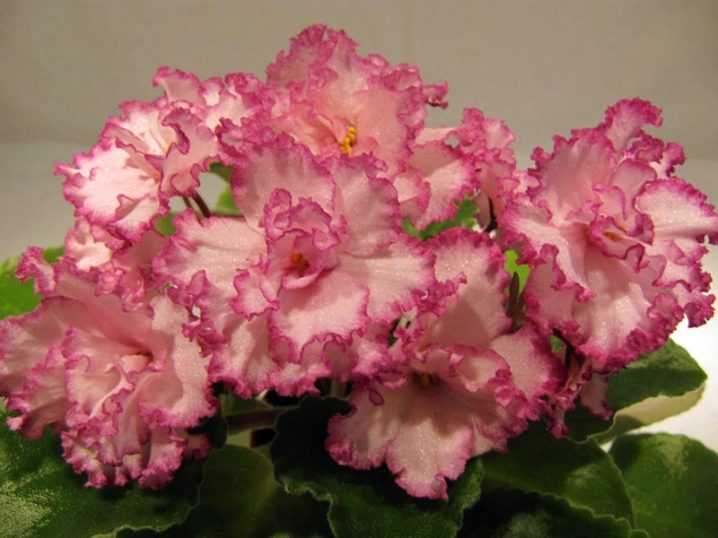
- "Aquamarine". A unique culture with blue buds, flowers 3-6 cm in diameter, belongs to the multicolored, petals are colored from light blue to dark blue.The plant has a developed, strong root system. The "Aquamarine" rosette is large. The culture blooms profusely, prefers moderate watering, does not tolerate cold.
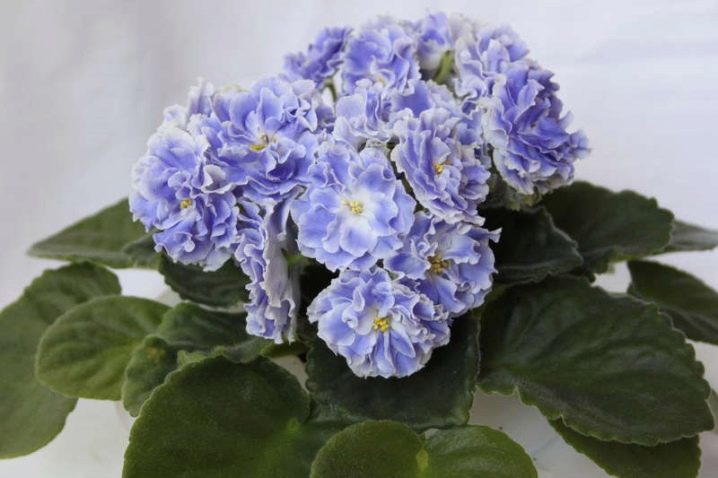
Origin
The homeland of the uzambar violet is the eastern territory of Africa. The area is the area of Tanzania, Kenya, Ulugur, Uzambar mountains. Saintpaulia violet-flowered is also found in places near various water sources, prefers fog, water suspension.
The flower was discovered by Walter von Saint-Paul in 1892. In 1893, the Saintpaulia ionanta culture was bred from the seeds obtained by the botanist Hermann Wendland - this is how the history of the home violet called Saintpaulia began (the name was given to the flower in honor of its discoverer).
The plant, originally from a hot continent, first appeared at an international flower exhibition held in Ghent in 1893. The right to cultivate a crop on a large scale was purchased by the firm of E. Benary. In 1927, the plant was brought to the United States, where it immediately gained popularity as a home culture. In 1949, there were already 100 varieties of violets. To date, the figure has exceeded tens of thousands, of which there are more than 2 thousand domestic varieties of plants.
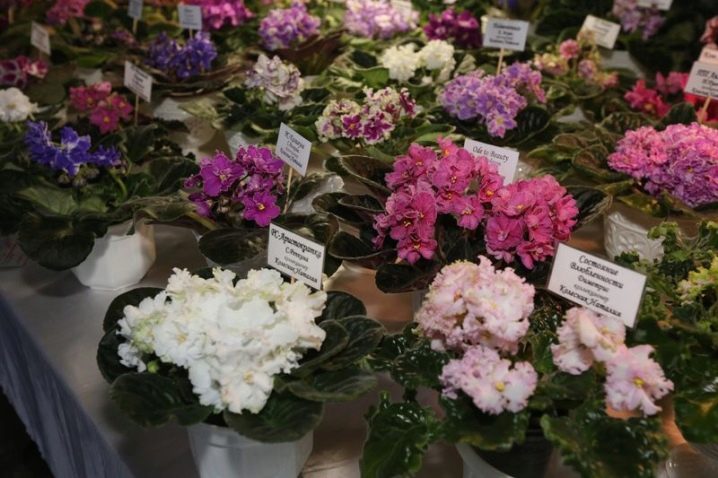
Where does it grow?
The growing area of violets has been expanded to Australia, Brazil, and southern Africa. Saintpaulias are also bred in other countries with different climatic zones as an indoor or garden plant. The latter is found in countries with warm tropical climates. In the CIS regions, the violet is planted in the summer season, and when the temperature reaches +17 degrees, the flowerpots with the culture are removed into the room.
Under natural conditions, the flower is almost in the shade of the mountains, protecting from the sun, due to which burns are easily formed on the fleecy leaves of Saintpaulia, and high temperatures that can lead to the death of the plant.

The subtleties of growing
The violet itself is unpretentious, but it is advisable to create suitable conditions for her, contributing to multiple, long-lasting flowering.
Lighting and temperature control
It is recommended to shelter the Uzambara violet from the sun; the fleecy leaf plates are burned and covered with brown spots with prolonged exposure to sunlight. When growing a crop on the south side, a shade curtain is created using paper or a cloth curtain from noon to 4 pm, or a container with the plant is placed away from windows.
For Saintpaulia, it is advisable to set 13-14 hour daylight hours. The number of hours can be compensated for at night by placing the plant under a phyto-lamp. This option is most suitable for north and east windows.
It is also worth protecting the violet from drafts.
Saintpaulia blooms year-round for up to 10 months a year. It is recommended to breed the culture at temperatures from +18 to +24 degrees.
It is desirable that no sharp fluctuations in temperature are observed.
Most often, in room conditions, ampelous varieties of Saintpaulia are contained, characterized by large rosettes, with drooping leaves, stems, outweighed through a flowerpot.
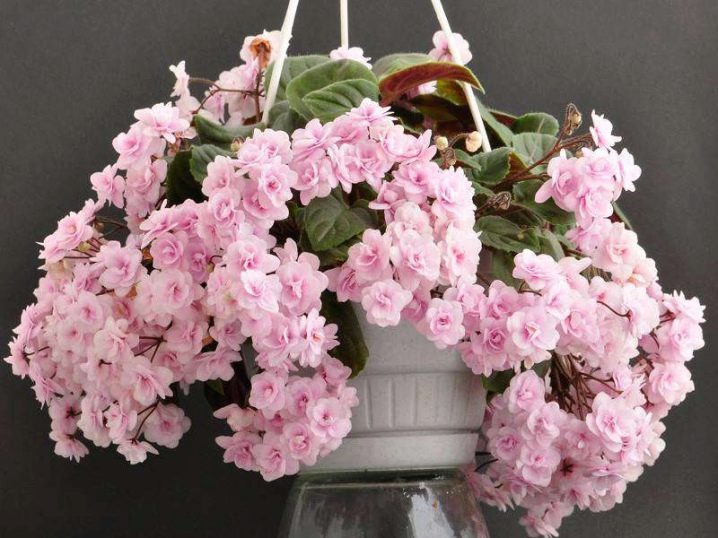
Soil and pots
It is best to plant the saintpaulias in plastic containers that are suitable for the size of the crop. A planting pot is similar in shape to a plate, a bowl. The violet root system is shallow, therefore it does not require deep, high pots.
The substrate is necessarily loose, moisture-consuming and breathable. Ready-made land should be purchased in “everything for the garden” stores or compiled independently from:
- humus;
- mixtures of lands (leaf, coniferous, sod);
- charcoal;
- sand (washed).
The mixing ratio is 2: 2: 4: 1: 1: 1. The finished composition must be mixed with 0.5 parts of ash, 2 tablespoons of superphosphate.
Planting a plant in this mixture is carried out only after the earth has been moistened. This is done so that the culture quickly adapts to the new soil and immediately begins to consume nutrients.
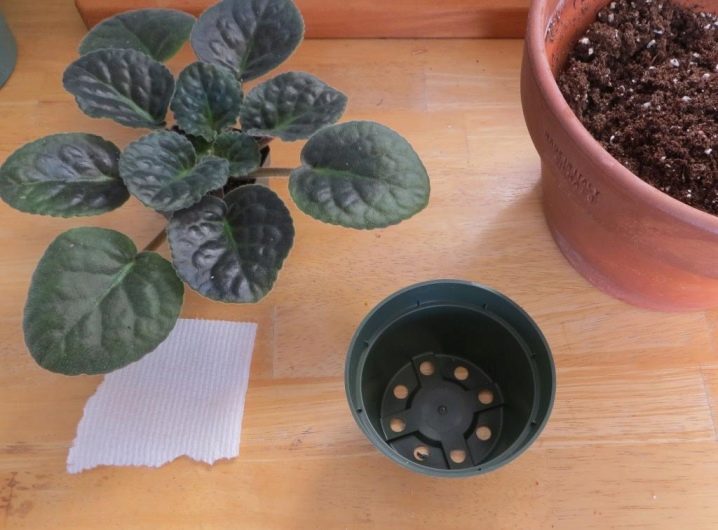
Important: the violet is not placed in a new substrate immediately, but after a couple of days. Once a season, the topsoil is loosened to improve air circulation.
Top dressing
To preserve the ability to bloom repeatedly and to provide assistance in this process, it is recommended to fertilize Saintpaulia with mineral fertilizers (the frequency depends on the manufacturer's recommendations). Fertilizer is diluted in water or added directly to the soil (granular form); in the latter version, the fertilizer concentration should be less than usual.
Important: the process of fertilizing the plant is carried out on moist soil, that is, before feeding, it is necessary to water the ground, and after an hour, apply fertilizers. This is done to prevent the root system from getting a chemical burn.
For young violets, nitrogen fertilizers should be added, during the flowering period - potassium phosphate fertilizers.
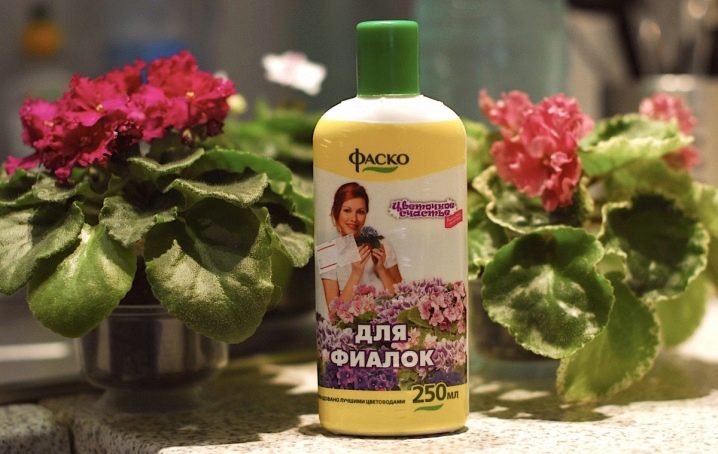
Water procedures
Due to the growing conditions of the flower, saintpaulias need to constantly maintain optimal air humidity (60-85%). Violet leaves are recommended to be regularly wiped from dust. Once every 2 weeks, the plant is bathed in warm water (33-35 degrees Celsius), without touching the ground. It is recommended to spray Saintpaulia leaves with water from a spray bottle every day or every other day (depending on the season).
Important: when moisture gets in and retains it, spots form on the petals of the flower, which reduce the attractiveness of the blossoming bud.
Treatments are carried out in the morning or evening so that the Saintpaulia has time to dry before being exposed to sunlight.
In the winter months, it is recommended to install a humidifier or plate of water next to the pot. These methods reduce the dryness of the air, which adversely affects Saintpaulia, causing the leaves and buds to dry out, provoking the development and growth of a colony of insect pests if the violet has been infected.
Let's dwell on the features of watering. Filtered or boiled water is used to water the plant. It is important that the liquid does not contain large amounts of chlorine or salt. With the constant use of heavy water on the soil and the walls of the pot, a salt coating of a whitish-yellow color is deposited over time.
When watering Saintpaulia, the liquid should not fall on the growth point, outlet. Stagnation of water will lead to the occurrence of a decay process. The most convenient way to water the plant is through the pallet. The land will absorb a sufficient amount of moisture, excess water is poured out 10-15 minutes after watering. Keeping the liquid in the pan for a long time leads to an excess of moisture in the substrate, the development of fungus and the death of the root system.
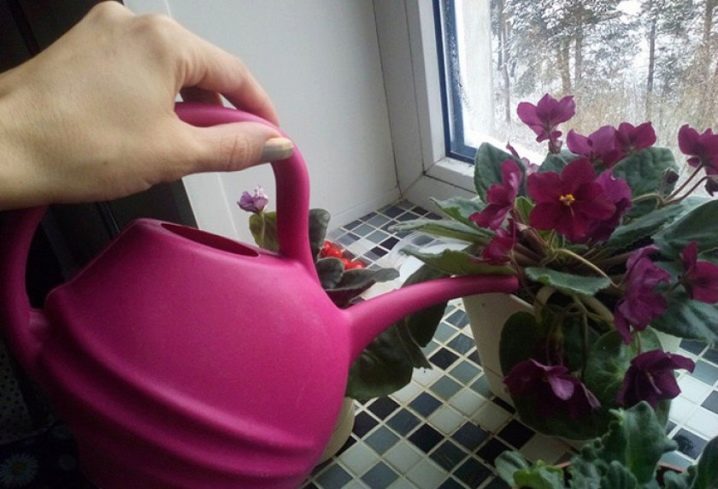
Important: Saintpaulia can safely tolerate the drying out of the soil, therefore it is better to water the soil when the soil is a quarter dry.
Care
It is necessary to regularly remove dead and dry shoots, leaves, flowers. Perform preventive pruning of the plant to improve growth and form a compact crop. During flowering, the pot of saintpaulia is not rearranged. Frequent movements can cause stress in the plant, leading to a short flowering or its complete absence, shedding of flower ovaries.
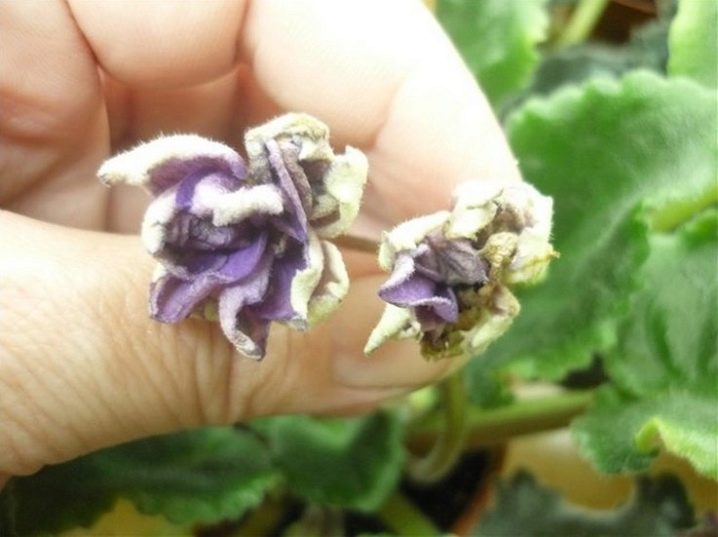
Diseases and pests
If small red dots appear on the leaves, their premature wilting and poor development, a change in the color of the leaf blade to yellow, it is worth checking the flower for pests. Violets are affected by fungal diseases, thrips (insects).
- Powdery mildew... It is expressed by the formation of a white fluffy bloom on the leaf plates and the stem of the plant. The fungus occurs due to improper conditions of the culture and an excess of nitrogen in the soil.

- Botrytis (gray rot). It manifests itself in the form of mildew and brown spots, easily infects neighboring crops. Fungal spores are capable of penetrating deep into the soil, which makes it impossible for its further use.For the development of the fungus, conditions with high humidity with insufficient lighting, sharp jumps in temperature during this period serve.
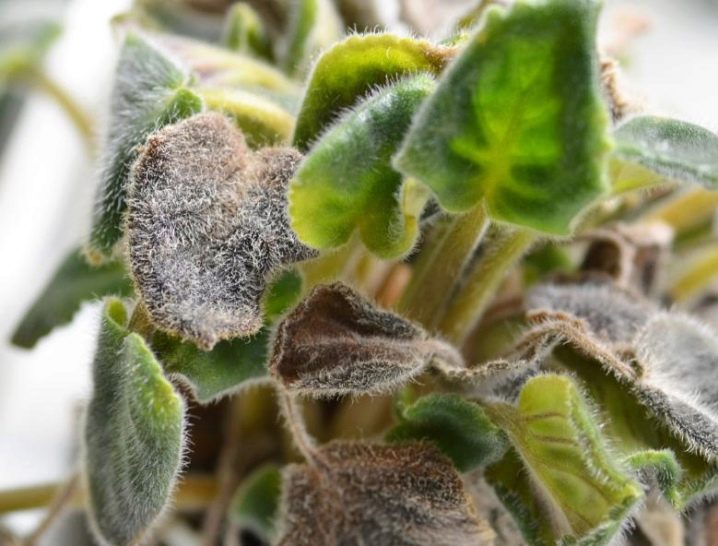
- Late blight. Change of color of the leaf plate to brown, loss of turgor. The disease is also caused by a fungus and can infect the soil. The cause is too wet soil.
The Uzambara violet is affected by insects: aphids, ticks, thrips, whitefly, worm.
To reduce the risk of these ailments, it is recommended to periodically carry out a full check of the plant, monitor the conditions of the culture. If infection has occurred, then purchase special drugs at a gardening store and follow the manufacturer's recommendations.
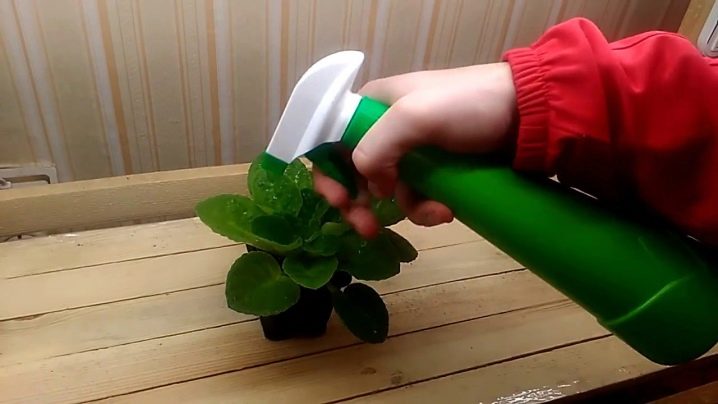
For information on how to care for violets to bloom and delight, see the next video.































The comment was sent successfully.